In the dynamic and ever-evolving world of fashion, reaching consumers effectively is no longer optional—it is the foundation of success. With countless brands competing for attention, the right marketing channels can significantly impact visibility, customer engagement, and ultimately sales. Fashion thrives on connection, storytelling, and aesthetics, which makes choosing the right mix of platforms and strategies crucial. From the rise of social media to the enduring power of email campaigns, content creation, and even offline activations, fashion businesses today must think strategically about how and where they connect with their audience.
One of the most influential forces shaping modern fashion marketing is social media. Platforms like Instagram, TikTok, Facebook, and Pinterest have completely transformed the way fashion is discovered and consumed. Their visual-first approach aligns perfectly with the fashion industry, allowing brands to showcase collections through striking imagery, short-form videos, and influencer collaborations. Social media offers the advantage of direct engagement with consumers, creating communities and conversations around brands. However, with billions of users and countless competitors, the challenge lies in standing out amidst content saturation. Fashion trends also shift rapidly on these platforms, meaning brands must remain agile, innovative, and ready to adapt their messaging to stay relevant. The most successful strategies often combine professional campaigns with user-generated content, influencer partnerships, and trend-driven updates that keep the brand’s presence fresh and relatable.
While social media garners much attention, email marketing remains one of the most effective and high-return tools for fashion businesses. Unlike the fleeting nature of social posts, emails land directly in a consumer’s inbox, allowing for personalized communication and tailored offers. Fashion brands use email to launch new collections, announce exclusive discounts, and share editorial-style content like lookbooks and style guides. The power of segmentation makes it possible to reach different customer groups with messages that resonate with their preferences and shopping habits. Still, the risk of over-communication is real, as too many emails can lead to unsubscribes or messages being filtered into spam. To succeed, fashion businesses must craft compelling subject lines, design visually appealing layouts, and provide genuine value to subscribers. When done right, email marketing not only boosts immediate sales but also builds long-term customer loyalty.
Another essential pillar in modern fashion marketing is content creation. Blogs, videos, style guides, and digital lookbooks help brands move beyond simply selling products to becoming storytellers and tastemakers. Content marketing positions a brand as an authority, enhancing credibility and trust among consumers. It also fuels search engine optimization (SEO), helping fashion businesses improve their rankings and attract organic traffic. While content marketing is resource-intensive—requiring consistent effort and creativity—the payoff is substantial. Collaborations with stylists, fashion bloggers, and influencers can expand reach and add authenticity, while storytelling techniques can create emotional connections that drive both engagement and loyalty. A well-maintained blog or video series can do more than showcase clothing; it can define a brand’s identity and ethos.
Alongside content marketing, e-commerce platforms remain at the heart of fashion sales in the digital era. Whether through a brand’s own website or third-party marketplaces like ASOS, Zalando, or Amazon, online stores make fashion accessible around the clock. Consumers expect a seamless shopping experience, and businesses must invest in optimizing their product pages with high-quality visuals, detailed descriptions, and trustworthy reviews. Yet the challenges are undeniable—competition online is fierce, and cart abandonment continues to be a major obstacle. To combat this, fashion businesses are adopting strategies like retargeting ads, abandoned-cart emails, and incentives such as free shipping or easy returns. Data analytics from e-commerce platforms also provide valuable insights into consumer behavior, helping brands refine their strategies to maximize conversions.
In parallel, influencer marketing has grown into a powerhouse channel for the fashion industry. By leveraging the reach and authenticity of influencers, brands can connect with highly engaged audiences in a way that feels personal and credible. From micro-influencers with niche communities to celebrities with global recognition, influencers act as bridges between brands and consumers. The key is finding individuals who genuinely align with the brand’s values and target demographics, as mismatched collaborations can feel inauthentic and harm credibility. Building long-term partnerships often yields the best results, allowing influencers to become true advocates rather than one-time promoters. With consumers increasingly skeptical of traditional advertising, influencer-driven storytelling often resonates far more deeply.
Finally, while digital strategies dominate, offline marketing remains a powerful tool for fashion brands. Traditional approaches like fashion shows, print ads, billboards, and pop-up shops continue to create meaningful connections, especially when integrated with digital campaigns. A well-executed offline event can create buzz, generate press coverage, and leave consumers with a tangible experience that strengthens emotional ties to the brand. Pop-up shops, in particular, offer a sense of exclusivity and discovery, while local collaborations can help fashion businesses connect with their communities. Though offline marketing tends to be more costly and geographically limited, it delivers a level of immersion and impact that digital platforms sometimes cannot replicate.
In conclusion, the fast-paced fashion industry demands a multi-channel marketing approach that combines the reach of digital with the intimacy of offline experiences. Social media, email, content, e-commerce, influencer collaborations, and traditional channels each bring unique advantages and challenges. Success lies in understanding the brand’s identity, knowing the target audience, and choosing the right combination of channels to maximize visibility and engagement. As trends evolve and technology advances, fashion businesses that remain adaptable, innovative, and consumer-focused will be best positioned to thrive in this competitive landscape.



